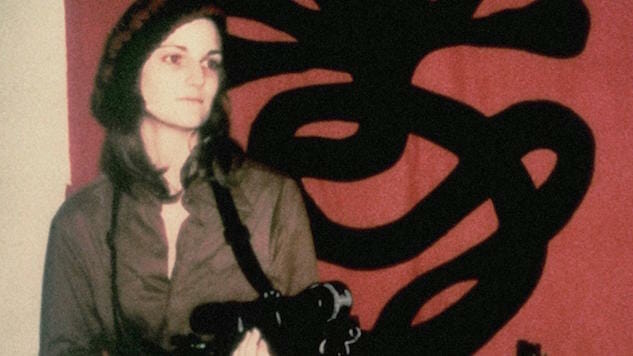Smithsonian Channel’s New Documentary Raises the Question: What Can We Learn from Patty Hearst?
Photo: Courtesy of Smithsonian Channel
Sometimes notorious people or stories, once part of the popular culture’s lingua franca, start to fall into legend or obscurity. One of the jobs of documentary filmmaking can be resurrecting them, perhaps at a remove of decades, to try and present a high-level—or deep-dive—view of something that might have been overlooked, forgotten, or not understood at the time. Sometimes they do a great job of it and sometimes they don’t. It’s common for found-footage-based docs to simply recreate the chaos, trying to cram too many disparate strands of information into a compact space and losing sight of the big picture. Let’s be clear right away that The Lost Tapes: Patty Hearst doesn’t suffer from that problem. It’s one of the most cogent TV documentaries of its type to come out in the last couple of years. If anything, this one doesn’t quite say enough.
In February 1974, Patricia Hearst, granddaughter of legendary newspaper mogul William Randolph Hearst, was kidnapped from her Berkeley home by a group of revolutionaries who called themselves the Symbionese Liberation Army. She was held by them for over a year. Or she developed a raging case of Stockholm Syndrome and joined the SLA—that’s still not entirely clear. It’s certainly what she said in recorded messages the SLA sent to her distraught parents, often via Berkeley’s KPFA radio station, and she was certainly sentenced on felony counts of armed robbery and assault for her part in a robbery at San Francisco’s Hibernia Bank. She was shortly thereafter released on bail and back with the affluent family she’d called “pigs” on those tapes. Her SLA identity (they’d renamed her “Tania”) seemed to evaporate, leaving behind a person who’d been drugged and brainwashed and was slowly reclaiming her sanity. Hearst did spend some time in prison, but her sentence was commuted by Jimmy Carter and Bill Clinton issued her a pardon.
Patty Hearst was a famous heiress, and this strange story captured the nation’s attention. But her decision (or coerced “decision”) to join her captors in attempted violent revolution was always ambiguous, despite numerous messages to her parents and the world at large in what seemed to be Patty’s own words. She’d been awakened, she said, after being locked in a closet for two months, to the plight of oppressed and poor people everywhere and could no longer claim her life of privilege: She would stay and she would fight. Her screeds against her parents and the FBI became more scathing as the months went on. The SLA demanded that Randolph Hearst distribute food to “every hungry person” in California and the guy actually freaking tried to do it, pouring several million dollars of his personal fortune into food distribution centers. Oakland, for example, saw the food trucks coming and did what it sometimes does best: erupted in riots. Patty sent out a message complaining that she’d heard the food wasn’t nice enough. SLA demands increased. Hearst hit a breaking point and put the case in the hands of the FBI. Then there was the iconic picture of Patty Hearst holding hostages at gunpoint in a San Francisco Hibernia Bank branch. The SLA got away with about $10,000. Footage might or might not indicate that another SLA member was actually holding Hearst at gunpoint at the same time.
-

-

-

-

-

-

-

-

-

-

-

-

-

-

-

-

-

-

-

-

-

-

-

-

-

-

-

-

-

-

-

-

-

-

-

-

-

-

-

-








































